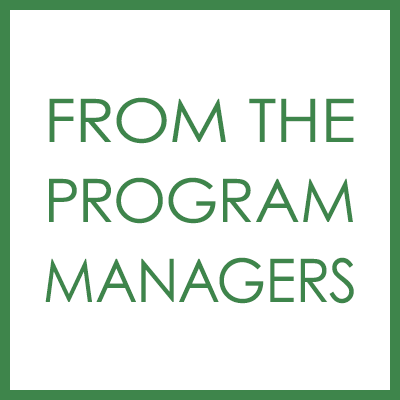
One year ago, most of us were just getting familiar with virtual meetings and remote collaboration. Now, we’re all veterans of screen-to-screen interactions and conducting our science online.
In just a few weeks, we will hold our second all-virtual Joint Atmospheric Radiation Measurement (ARM) User Facility/Atmospheric System Research (ASR) Principal Investigators Meeting. Formal meeting sessions will run Monday, June 21, through Thursday, June 24, from 11 a.m. to 4 p.m. Eastern time, with informal networking sessions planned from 4:15 to 5 p.m. Eastern.
We want to let everyone know about the virtual networking sessions at this year’s meeting. We will use the Wonder platform so that you can meet, have real conversations, and get to know each other in real time.
Detailed information about the meeting, including how to register, a draft agenda, and instructions on submitting poster abstracts and breakout session requests, can be found on the meeting website. The registration deadline is June 18.
As you plan for your time during the Joint Meeting, please consider which breakout sessions you would like to attend:
- The Multidisciplinary Drifting Observatory for the Study of Arctic Climate (MOSAiC)
- Eastern Pacific Cloud Aerosol Precipitation Experiment (EPCAPE)
- Aerosol Processes in Deep Convection: Discovery to Parameterization
- Lidar Applications
- Improving Understanding of Deep Convection Life Cycle with Novel Measurement and Modeling Approaches
- Representation of Secondary Organic Aerosol Processes in Models Across Scales
- How Will Shortwave Radiometer Updates Impact Science in ARM?
- SAIL and SPLASH: Coordinated Observations and Atmospheric Process Studies in High-Altitude Complex Terrain
- Interactions Among the Land Surface, Convective Boundary Layer, Clouds, and Aerosols
- Applications of Machine Learning to ARM/ASR Science
- Cloud Process Studies Needed to Reduce Uncertainty in Extratropical Cloud Feedbacks in Climate Models: A Focus on Observations and Modeling of High-Latitude Marine Postfrontal Clouds
- Review of Aerosol Measurement Activities and Plans with a Focus on NSA Measurement Priorities, Chemistry Measurements at SGP and ENA, and a Plan for Aerosol Intensive Periods
Expanded details for each breakout session, including full participant details, are on the meeting website. If you want to participate, contact the breakout session organizer.
Don’t forget! Poster PDFs are due June 6. Please submit your PDF here. I know this is earlier than you might have submitted your poster in the past, but the extra time is needed for our virtual meeting environment.
While we look forward to being able to see you in person in the future, we acknowledge that the virtual format opens the door for participation by many more of our colleagues.
News for High-End Computing Users!
If you have a NERSC allocation, please keep track of your needs and your usage. If your allocation was less than your initial request and you have used more than 90% of it, please contact us. More time may be available.
In other supercomputing news, NERSC’s new Perlmutter supercomputer at Lawrence Berkeley National Laboratory will be coming online soon. If you have GPU-compatible code, this may be a good opportunity for additional supercomputing resources, because all the first nodes will be GPU-based. NERSC will hold a Perlmutter training event on Wednesday, June 3. Click here to register.
We look forward to seeing you at the ARM/ASR Joint Meeting.
– Shaima Nasiri and Jeff Stehr, ASR Program Managers
# # #This work was supported by the U.S. Department of Energy’s Office of Science, through the Biological and Environmental Research program as part of the Atmospheric System Research program.

